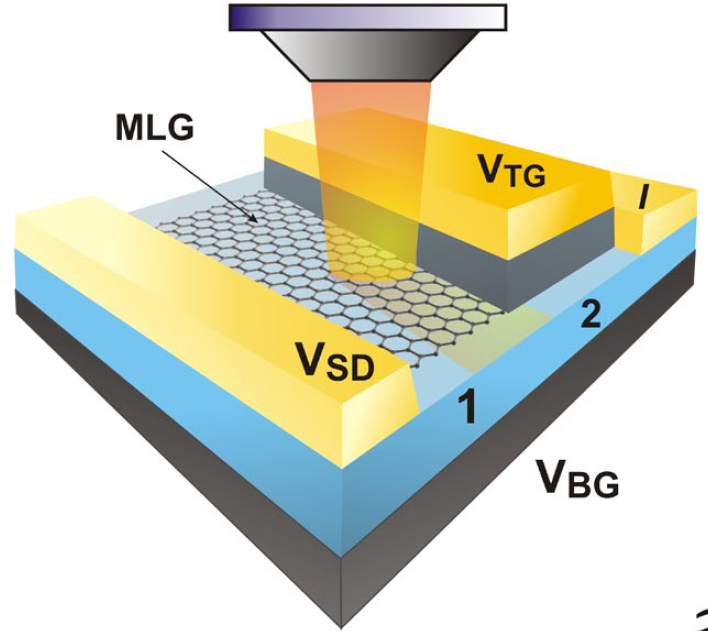Graphene shows unusual thermoelectric response to light
October 10, 2011

Shining light on graphene produces an electrical current across a broad range of temperatures and light wavelengths (credit: Nathaniel M. Gabor et al./Science)
Shining light on graphene can produce electric current, MIT researchers have found, which could lead to improvements in photodetectors and night-vision systems and a more efficient way to generate electricity from sunlight.
This current-generating effect had been observed before, but researchers had incorrectly assumed it was due to a photovoltaic effect, says Pablo Jarillo-Herrero, an assistant professor of physics at MIT. Instead, the MIT researchers found that shining light on a sheet of graphene, treated so that it had two regions with different electrical properties, creates a temperature difference that, in turn, generates a current.
This response in graphene, an exotic form of carbon consisting of sheets a single atom thick, occurs across a broad range of temperatures — all the way up to room temperature, using light no more intense than ordinary sunlight.
Graphene could be a good photodetector because it produces current in a different way than other materials used to detect light, Jarillo-Herrero says. It can also detect over a very wide energy range. For example, it works very well in infrared light, which can be difficult for other detectors to handle. That could make it an important component of devices from night-vision systems to advanced detectors for new astronomical telescopes.
The new work suggests graphene could also find uses in detection of biologically important molecules, such as toxins, disease vectors or food contaminants, many of which give off infrared light when illuminated. And graphene, made of pure and abundant carbon, could be a much cheaper detector material than presently used semiconductors that often include rare, expensive elements.
The research also suggests graphene could be a very effective material for collecting solar energy, Jarillo-Herrero says, because it responds to a broad range of wavelengths; typical photovoltaic materials are limited to specific frequencies, or colors, of light.
Ref.: Nathaniel M. Gabor, et al., Hot Carrier–Assisted Intrinsic Photoresponse in Graphene, Science, 2011; [DOI: 10.1126/science.1211384]